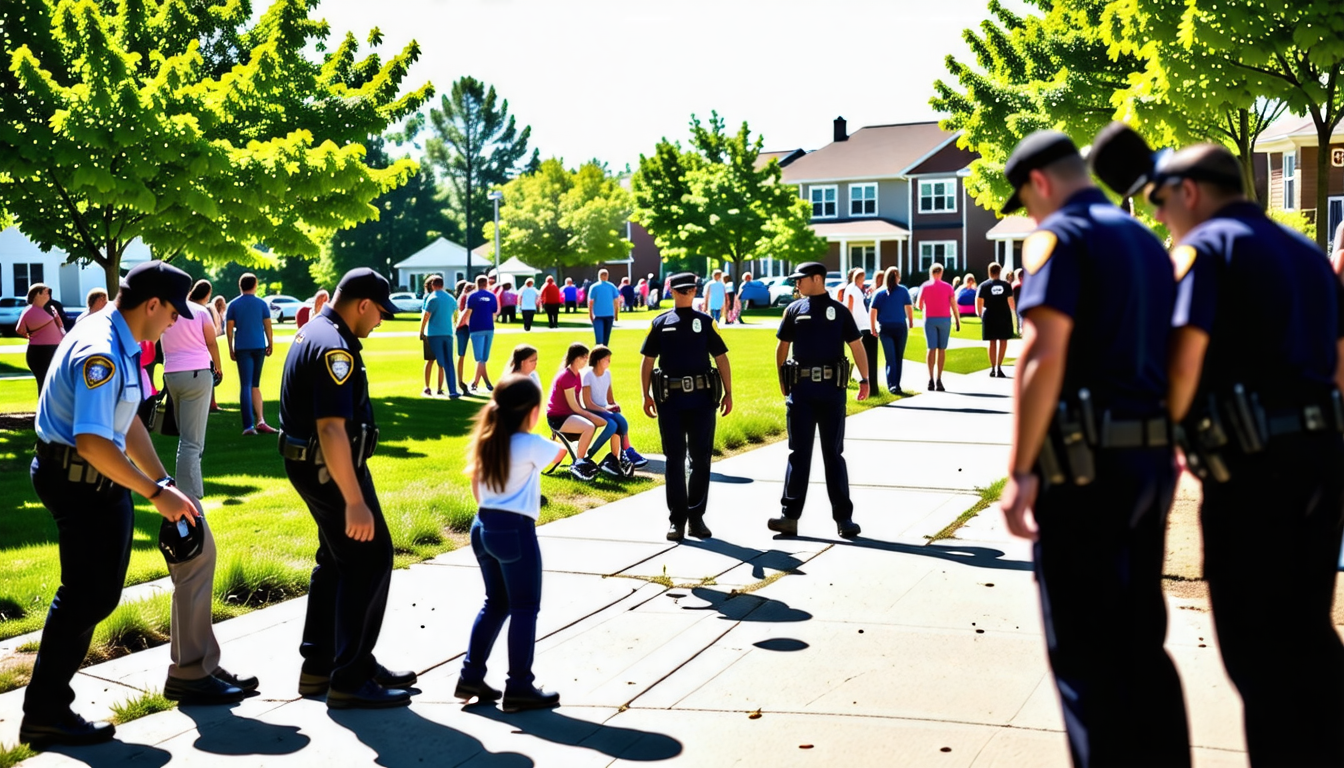|
IN BRIEF
|
In the ongoing battlefield against illegal substances, police departments face the daunting challenge of managing drug enforcement strategies effectively. The rise of the opioid crisis and the pervasive influence of drugs like fentanyl amplify the urgency for innovative approaches amidst growing public scrutiny and an evolving legal landscape. Traditional methods of enforcement are increasingly criticized, prompting law enforcement to re-examine their tactics. With a focus on targeting not just street-level dealers but also high-level distributors, agencies are adopting a more comprehensive, community-based approach that emphasizes preventative measures and collaboration with social services. As communities grapple with the devastating effects of drug abuse, understanding how police navigate these complexities becomes vital for fostering public trust and ensuring safety.
The landscape of drug enforcement is constantly evolving due to new challenges and changing regulations. Police departments across the country are tasked with creating effective strategies to combat drug-related issues while maintaining public trust. This section explores various approaches and methods employed by law enforcement to manage drug enforcement effectively.
The Role of Community Feedback
Encouraging feedback from community members is also a valuable component of evaluating drug enforcement strategies. Engaging in open dialogues with the community allows law enforcement to gain insights into public perceptions and concerns. These interactions can help foster trust and lead to collaborative solutions that are more effective in addressing drug-related issues.
The Crisis of Confidence in Law Enforcement
Over the past few decades, there has been a growing crisis of confidence in policing, significantly affecting public perception and cooperation. The notion that the enforcement-driven “War on Drugs” has failed to diminish drug use or associated violence has led many to critique existing strategies. This loss of trust necessitates innovative and collaborative approaches in drug enforcement, which includes public education and community engagement.
The management of drug enforcement strategies by police departments reflects a multifaceted approach to combatting the persistent drug crisis. According to recent statistics, overdose deaths related to opioids, particularly fentanyl, have surged, resulting in more than 100,000 fatalities in the past year alone. Consequently, law enforcement agencies have been compelled to reassess traditional methods and introduce innovative strategies.
One of the primary challenges police face is the dual crisis of rising violence linked to drug trafficking and declining public confidence in the effectiveness of the War on Drugs. This necessitates a shift towards collaboration with community organizations and increased focus on high-level distributors instead of solely targeting low-level offenders. For example, initiatives such as LEAD (Law Enforcement Assisted Diversion) have shown promise by providing comprehensive support to offenders, decreasing recidivism rates significantly as noted in various studies.
Furthermore, the integration of data and technology is revolutionizing drug enforcement. Departments are employing analytical tools for proactive policing and inter-agency collaborations are on the rise, improving intelligence sharing and operational efficiency. Thus, effective management of drug enforcement strategies requires adaptability, community engagement, and a focus on both enforcement and prevention.
In navigating the complex landscape of drug enforcement, police departments are increasingly adopting comprehensive strategies that address both the immediate threats posed by drug-related violence and the long-term challenges of community trust. By leveraging a mix of proactive policing and targeted interventions, law enforcement aims to dismantle high-level drug trafficking organizations, disrupt local markets, and minimize the impact of substances like fentanyl. Furthermore, through community partnerships and educational initiatives, police departments seek to prevent youth involvement in drugs and provide recovery pathways. As challenges evolve, so too must the tactics employed by law enforcement, fostering a dynamic approach that prioritizes both public safety and community well-being.
FAQ
What are the primary strategies used by police for drug enforcement?
R: Police employ a variety of strategies, including focusing on high-level distributors, increasing narcotics arrests, targeting gangs involved in drug trafficking, and implementing organized neighborhood crackdowns. These approaches aim to disrupt the drug trade and enhance community safety.
How do police prioritize drug enforcement in their operations?
R: In many cases, drug enforcement operations, particularly for misdemeanors, are considered a lower priority compared to violent crimes. However, police management still dedicates resources to address the most significant threats posed by drug-related violence and the overall safety of the community.
What challenges do police face in managing drug-related crime?
R: Police face a dual crisis involving an ongoing drug epidemic and a significant decline in public confidence in law enforcement. The traditional enforcement-driven approaches of the “War on Drugs” are increasingly scrutinized, requiring law enforcement to adapt and innovate their strategies.
How does the legalization of certain substances affect police drug strategies?
R: The legalization of substances like marijuana has complicated drug strategies for police, as it can lead to increased violence and black market activities. Even as some drugs become legal, the need to address the dangers associated with harder drugs, particularly opioids like fentanyl, remains critical.
How do police collaborate with other agencies in drug enforcement efforts?
R: Police often collaborate with local, state, and federal agencies, as well as community organizations, to develop comprehensive drug enforcement strategies. These collaborations may include participating in task forces, sharing intelligence, and providing support services for addicts involved in the criminal justice system.
